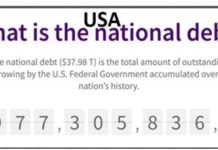INVESTMENT PERSPECTIVE
By J Mulraj
Mar 20-26, 2022
The many house of cards
 Technology paints a picture of a glorious future! One where:
Technology paints a picture of a glorious future! One where:
- Nuclear fusion will provide, at some time, an unlimited source of clean energy to power the world, thereby negating the geopolitical power of OPEC + and helping save the world from an environmental catastrophe
- Electric vehicles plus autonomous driving will not only convert the car from an expense to an income generator, but will also help the environment plus free up space used for parking vehicles, for other uses.
- Robotics, iOT, 3D printing will improve productivity, reduce wastage of material and so generate enough wealth to provide a universal basic income.
- Cellular agriculture and precision fermentation will obviate animal farming as a protein source, thus freeing up vast tracts of land used in such farming, to be used for other things like reforestation for carbon capture.
- Genomics will pave the way for customised medicines, and 5G telephony for remote treatment and surgery.
If only geopolitical events, like the ongoing war in Ukraine, and perhaps a similar misadventure by China in Taiwan, does not turn an exciting future into a mirage!
Instead, the long term effects of the Ukraine war, one that was completely avoidable, are threatening to turn the world into chaos. We stare at:
- A likely famine, especially in Africa, triggered by wheat and fertiliser shortages. Russia and Ukraine supply 40% of wheat and a significant amount of all fertilisers. Planting of wheat crop in Ukraine should start now, but can’t, in a war torn country. Wheat shortages have caused food riots in the past (Arab Spring) and can, again.
- A huge shortage of crude oil, and sharp increase in price of crude. Brent crude has hit $200/b and will rise further. In this video Peter Zeihan points out that with low oil evacuation from Russia’s Black Sea ports (due to loss of insurance cover in a war zone and European dock workers refusing to unload Russian crude), the system will choke. Once oil storage capacity overflows, Russia would need to stop producing. In the Russian perma frost, a stoppage lasts for years! The expertise to restart oil flow from frozen pipelines lies with American service firms, such as Halliburton, Shlumberger, Baker Hughes, all of whom have recently shut shop in Russia. Hence, a cessation of oil flow from Siberian fields, would reduce Russian oil supply, roughly 10% of world supply.
- In order to get more oil, Biden’s USA, and Europe, are willing to sign a new deal with Iran, one that would potentially allow it to produce a nuclear bomb. That’s jumping from the frying pan into the fire!
- Putin has also threatened use of nuclear weapons if he feels Russia is in danger.
That’s one heck of a dangerous house of cards!
Another house of cards is the mountain of global debt
Global debt is a whopping $303 trillion, about 3.5 times global GDP. This excludes outstanding exposure in several derivative markets, estimated to be a quadrillion dollars. That’s $ 1000 trillion! There is a doubt about the correctness of this estimate, but even if it’s exaggerated, it’s a huge problem. Remember, it was derivative exposure in credit default swaps, together with subprime mortgages that led to the 2008 global financial crisis. Instead of learning lessons, bankers have increase exposure manifold, since.
Central bankers have started raising interest rates, to combat inflation. Inflation would get a lot worse if crude oil goes up, as it will, and wheat, and commodity prices rise, as they are. So several rate hikes are expected. The market expects seven more this calendar year, by the US Fed, of 0.25% each. A 1% hike on $303 trillion global debt is over $3 trillion, more than India’s GDP.
Yet another house of cards is the threat to the status of the US $ as the international currency. The foundation of this is a deal made with Saudi Arabia in 1974, in which Saudi agreed to sell its crude in dollars, thus creating global demand for the currency. In return for security guarantee for the nation, and the House of Saud. Well, last week, crown Prince Mohammed Bin Salman agreed to sell crude in Chinese renminbi. This creates demand for renminbi, and reduces it for USD. It would take years to displace USD but the world is moving on the de dollarisation path.
India’s EPFO (Employee Provident Fund Organisation), which has 150 million accounts, and manages a pension fund of Rs 8.5 trillion, might be another house of cards. EPFO has just cut interest payment for the 150 m. accounts from 8.5% to 8.1%. That’s more than Bank fixed deposit interest rates, and is tax free. The payout rate is decided by its board. Is it earning more than the payout?
Remember Unit 64, the first open ended mutual fund scheme launched by UTI, that was popular, but landed in trouble years later? It started off, as all open ended funds do, with the sale and repurchase price slightly below, and above, respectively, it’s NAV (Net Asset Value). This is how it should be. The NAV is, (like gold was under the gold standard, when fiat currencies were backed by gold) the tether that prevented things going out of control.
Sadly, that tether was removed in 1971, when, due to the Bangladesh war, the Government introduced some controls, including control on corporate dividends. As a result, US 64 lost its attractiveness. UTI removed the link of sale and repurchase price to NAV. The corporate sector poured money in the scheme, as it gave a handsome return compared to a bank current account (zero interest) and was redeemable within days. Removal of the tether created the crisis later, and investors, especially recent entrants, suffered losses.
Well, EPFO is much much larger than US 64 was, so one hopes it’s net income is sufficient to cover the 8.1% interest it is paying, AFTER writing off bad investments (such as in IL&FS). Else this can become a horrendous house of cards.
Last week the Sensex lost 501 points to close at 57362.
Though UNCTAD has lowered India’s 2022 GDP forecast from 6.1% to 4.6%, direct tax collections are up 44% and Apr-Jan exports grew 37%.
But the Indian economy will be hit by rising crude prices, being heavily dependent on imported crude oil. And by high commodity prices, inflation and rising interest rates. Stock markets cannot sustain high valuations created when money supply was high. Tough times coming.
Picture Source: https://futechblog.com/









































COMMENTS